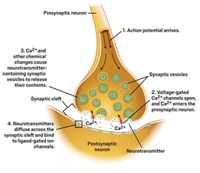Advertisement
Grab your lab coat. Let's get started
Welcome!
Welcome!
Create an account below to get 6 C&EN articles per month, receive newsletters and more - all free.
It seems this is your first time logging in online. Please enter the following information to continue.
As an ACS member you automatically get access to this site. All we need is few more details to create your reading experience.
Not you? Sign in with a different account.
Not you? Sign in with a different account.
ERROR 1
ERROR 1
ERROR 2
ERROR 2
ERROR 2
ERROR 2
ERROR 2
Password and Confirm password must match.
If you have an ACS member number, please enter it here so we can link this account to your membership. (optional)
ERROR 2
ACS values your privacy. By submitting your information, you are gaining access to C&EN and subscribing to our weekly newsletter. We use the information you provide to make your reading experience better, and we will never sell your data to third party members.
Natural Products
Nanoparticles Loaded With Curcumin Boost Memory In Alzheimer’s Animal Model
Nanomedicine: Polymer particles help turmeric compound slip into the brains of rats and promote the growth of new neurons
by Katherine Bourzac
December 13, 2013

A natural compound found in turmeric has shown promise as a potential treatment for Alzheimer’s disease but delivering it to the brain has been a challenge. Now researchers have packaged this compound, curcumin, inside polymer nanoparticles to help it get into the brain (ACS Nano 2013, DOI: 10.1021/nn405077y). For the first time, they’ve shown that this encapsulated curcumin can stimulate the production of neurons and improve memory in a rat model of Alzheimer’s disease.
The first clues about curcumin’s possible beneficial properties came from India, where Alzheimer’s rates are low and people consume a lot of turmeric. They use the plant not only for curries but also in traditional medicines. This epidemiological clue then led researchers to perform studies on curcumin in cells and in animals. The results have stirred up hopes of a new treatment, including evidence that the compound has antioxidant and anti-inflammatory effects, can protect neurons from dying in animal models of neurodegenerative diseases, and can disrupt the protein clots characteristic of Alzheimer’s.
But researchers also know that curcumin does a poor job crossing the body’s protective barricade around the central nervous system, the blood-brain barrier, says Rajnish Kumar Chaturvedi, a toxicologist at the Indian Institute of Toxicology Research. “Only 15 or 20% of curcumin reaches the brain—the rest of it is metabolized in different organs,” he says. As a result, curcumin must be given in large doses to animals to have any effect. Unfortunately, curcumin may be toxic in high quantities. To solve the delivery problem, Chaturvedi collaborated with Kailash Chand Gupta to encapsulate the curcumin in nanoparticles made from the biodegradable, drug-releasing polymer poly(lactic-co-glycolic) acid, or PLGA.
Chaturvedi and Gupta studied these loaded particles in rats treated with amyloid beta proteins to induce a model of Alzheimer’s disease, and in rat neuronal stem cells collected from the hippocampus, a region of the brain that plays a key role in the formation of new memories. In the cells, the nanoparticles released curcumin gradually and were not toxic at high doses. The particles also stimulated neuronal stem cells to generate new neurons. This process, neurogenesis, slows or stops in the brains of people with Alzheimer’s disease. The curcumin nanoparticles enhanced proliferation of the neuronal stem cells even at doses as low as 1 nM. The same concentration of bulk curcumin had no effect; it took 500 times more of the free compound to enhance cell growth, suggesting that the polymer encapsulation helped curcumin stimulate cell growth.
In the animal studies, Chaturvedi and Gupta monitored where their curcumin nanoparticles traveled after injection, and their effects. Rats treated with the particles had three times more curcumin in their brains than those injected with the compound alone. Post-mortem examinations of the brains from the particle-treated animals revealed evidence of dividing neuronal stem cells and other signatures of neurogenesis. Particle-dosed rats also performed significantly better than curcumin-injected animals injected in a standard memory test.
“People have wanted to see what happens to curcumin in the central nervous system for a long time,” says Mark C. Stahl, a clinical neurologist who specializes in neurodegenerative disorders at the University of California, Los Angeles. “This ability to package it so that it does get into the central nervous system is exciting.”
He points out that a treatment that replenishes neurons in the hippocampus might help with memory loss and other symptoms of Alzheimer’s disease but probably would not cure the disease. Alzheimer’s is complicated, and other phenomena seem to be more central to the progression of the disease—particularly the production of amyloid proteins. Stahl wants to see further research on how the encapsulated curcumin promotes neurogenesis and improves the rats’ memory.





Join the conversation
Contact the reporter
Submit a Letter to the Editor for publication
Engage with us on Twitter